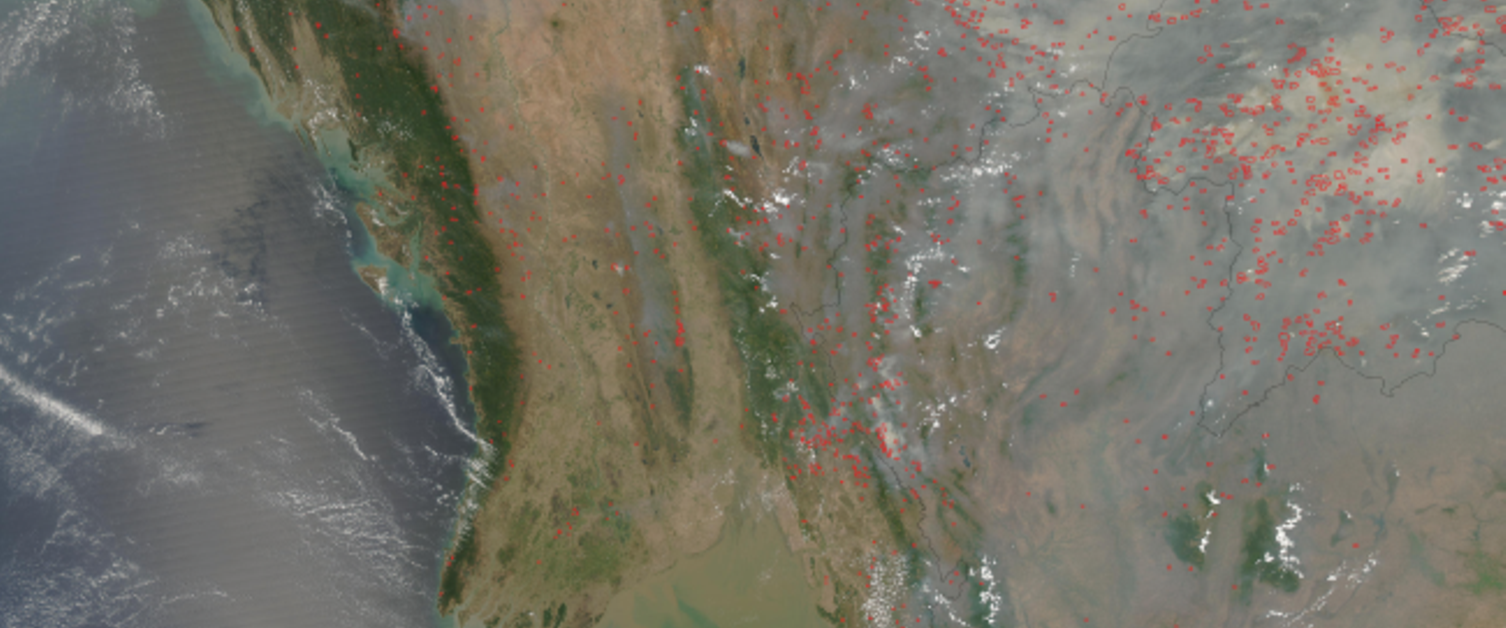Firing Up the Weather
- By AMS Staff
- Aug 23, 2023
A Moderate Resolution Imaging Spectroradiometer (MODIS) image taken on 25 Mar 2004 shows smoke in the sky from fires burning in Southeast Asia.
[Image courtesy Jeff Schmaltz, MODIS Rapid Response Team, NASA-GSFC]
“Wildfires are not just a consequence of climate change or global warming—they’re also an active participant.”
—Xin Huang of Nanjing University, coauthor of a recent study in Science that suggests large fires can create feedback loops that alter local weather and subsequently amplify the fires. Huang and colleagues used computer models to simulate the interaction of wildfire smoke and weather over days and weeks during two extreme events: the September 2020 “gigafire” in the western United States and the 2004 Southeast Asia fire season. The simulations were based on surface meteorological and air quality data as well as satellite observations of thermal anomalies, aerosols, and burned surface area. The research team found that smoke from the fires influenced short-term weather patterns that not only caused the fires to get stronger but also exacerbated air pollution driven by the fires. Interestingly, the fire-influenced weather was different in the two locations: in the 2020 West Coast event, smoke obstructed sunlight and cooled the land, which in turn intensified winds that transported dry air from land toward the sea. This trapped moisture offshore and caused humidity over the land to decrease, further fueling the fires. In Southeast Asia, smoke caused air higher in the atmosphere to warm while creating a shading effect that caused cooling over land relative to the sea, which cools more slowly. This temperature difference generated along the coast spurred a cyclone that altered the region’s circulation patterns, stifling typical monsoon rains and leaving the land dry. The study found that some locations are more prone to fire weather feedbacks than others, and identifying these areas while also including chemical weather in forecasting models could enhance fire weather forecasting by focusing aid on high-risk areas. “In this way, with the same cost of the firefighting resources, we can maximize our disaster mitigation,” Huang says. [Source: Eos]
